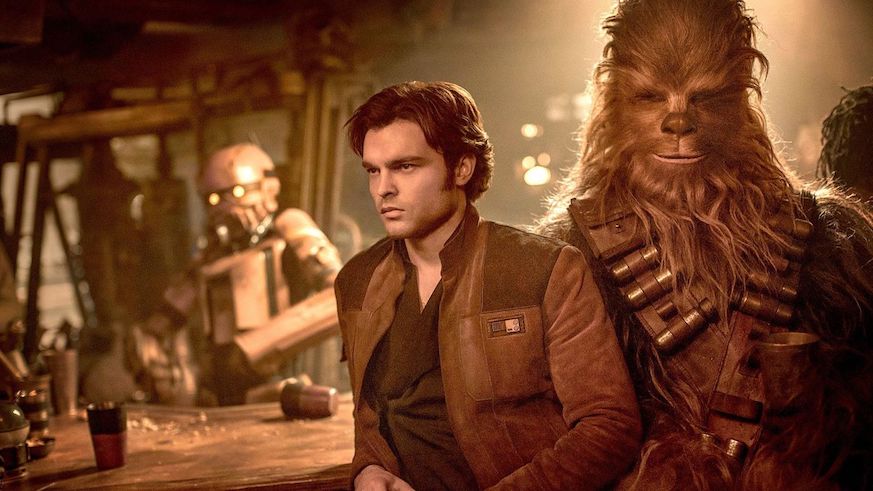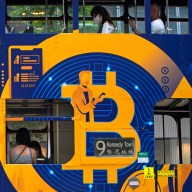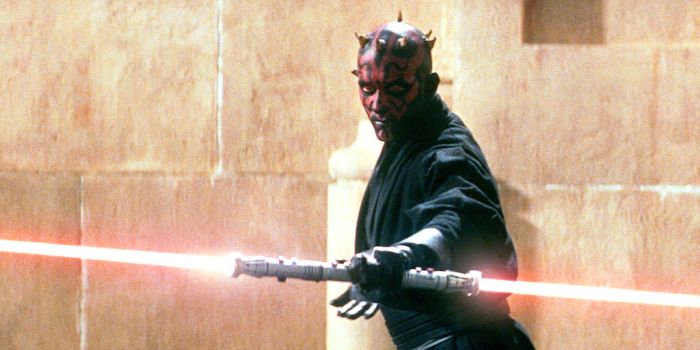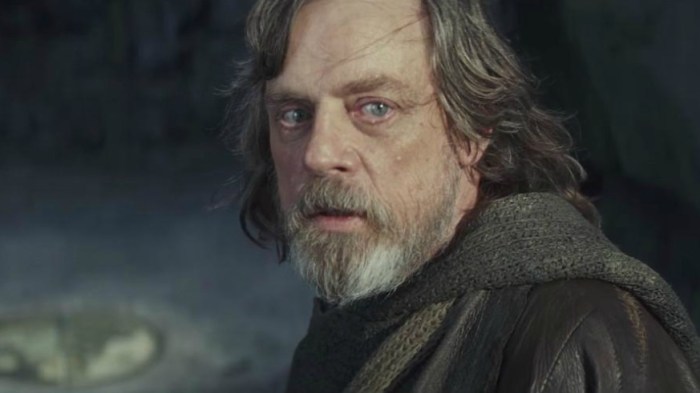For any other film, taking in $103 million at the box office on opening weekend is cause for champagne toasts and talk of sequels. But for a Star Wars movie on the four-day Memorial Day Weekend, that total is cause for concern.
Its second weekend box office take of $29 million confirmed it: The origin story of smuggler-turned-rebel Han Solo with a production budget of $250 million — the most expensive film in the Star Wars franchise and one of the priciest of all time — is a box office disappointment.
So what happened with Solo? “We are all over it, and will spend a lot of time digging into why things happened the way they did,” Disney’s chief of distribution Dave Hollis tells the Hollywood Reporter. With two more spinoff movies about Boba Fett and Obi-Wan Kenobi already announced, they better hope to figure it out.
Until then, we’ve rounded up 11 reasons to explain why Solo didn’t meet box office expectations. This story contains major spoilers for Solo: A Star Wars Story.
I liked Rogue One and Solo may prove to be a fun movie that makes you feel a connection to Star Wars, but I #boycottSolo to make a statement to Disney&Kathleen Kennedy. You cannot disrespect an entire fanbase that basically created fandom & has sustained your brand for 40+ years!
— Pal Gals (@ThePalGals) May 25, 2018
Backlash against The Last Jedi
The likely main factor in Solo’s weak performance has nothing to do with the movie at all. Speculation that the divisive fan reaction to The Last Jedi (Mark Hamill has even gone so far as to suggest retconning the story) may hurt Solo began back in January. It crystallized in the weeks leading up to the release with the hashtag #boycottSolo, urging people to put off seeing the film, at least on opening weekend. Many of the posts name–checked Lucasfilm president Kathleen Kennedy and Last Jedi writer/director Rian Johnson, calling for their ouster over accusations that the film had been unfaithful to the character of Luke Skywalker (and other uglier reasons).
Too much competition for viewers
You’d think a long holiday weekend would help box office sales, but Memorial Day Weekend hasn’t been a historically strong time for blockbusters. It’s the unofficial start of summer, usually the first chance for cookouts and road trips after spring’s temperamental weather ebbs. Box Office Mojo has the highest-grossing MDW film ever as Pirates of the Caribbean: At World’s End with $139.8 million (Solo is seventh).
The biggest problem might be that Solo opened against serious competition from two other popular franchises: Deadpool 2 and Avengers: Infinity War. Solo’s numbers be partially blamed on audience fatigue with the sci-fi/fantasy genre.
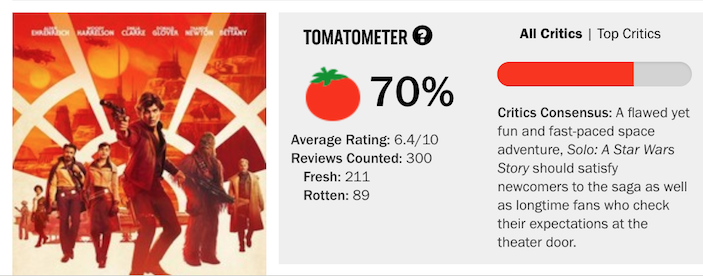
Lukewarm reviews by critics
Strong critical acclaim helped offset the severely split reception for The Last Jedi (which was also helped by being an official part of the nine-episode Star Wars arc). But reactions to Solo have been tepid since the first trailers came out — just three months before the film’s release date. That lukewarm kettle never boiled into hype once the film was screened for critics, earning just a 71% on Rotten Tomatoes.
“Buckle up for a bold adventure.” Solo: A @StarWars Story is now playing. Get tickets: https://t.co/W5j8g9AtBN #HanSolo pic.twitter.com/GuOlffL0uf
— Disney (@Disney) May 25, 2018
The cinematography doesn’t match the plot
Whatever other issues the film may have, Lawrence and Jon Kasdan wrote a genuinely fun space Western crossed with an action-packed heist movie that wears its heart on its sleeve. But you wouldn’t know it from Bradford Young’s moody cinematography, which is so dark at times that some theaters are having to recalibrate their projectors to screen the film properly. The story is supposed to be upbeat and snappy, but the washed-out colors and dark sets make it feel as ominous as the last half hour of Empire Strikes Back.
Whose movie is this anyway?
All the pre-production drama of Solo may have shaken audience confidence in the final product. Original directors Phil Lord and Chris Miller, known for their fast-paced comedy in films like 21 Jump Street and The Lego Movie, were fired just three weeks before principal photography would’ve ended over concerns about the film’s tone and the pace of production.
Then their replacement, Ron Howard, didn’t inspire much excitement. He’s been a friend and collaborator to George Lucas since 1973’s American Graffiti, but was the director who made Apollo 13 really the right choice to tell the gritty backstory of a notorious intergalactic smuggler?
Too many Star Wars movies?
There’s an argument to be made that two Star Wars movies in six months is too many. But given the brisk pace of production over at Marvel, Star Wars fatigue seems unlikely.
What’s more probable is Solo faced the same issues as Rogue One. Though that first Star Wars spinoff was a box office success, its total ($1.05 billion) was weaker than The Force Awakens ($2.07 billion) or Last Jedi ($1.33 billion), possibly because it didn’t feature any known characters (outside of brief cameos by Leia and Darth Vader) and its plot isn’t essential to future Star Wars movies.
Alden Ehrenreich was wrong for the part of Han Solo
It’s always difficult to step into an iconic role. As young Han, the challenge for Alden Ehrenreich was not just becoming the lovable scoundrel — it was measuring up to the man who has made a career of playing that archetype in Hollywood. An on-set acting coach being hired early into production wasn’t a good sign, and he was just never able to twist the golden boy smile that won him acclaim in Hail, Caesar! into the signature knowing smirk of Han Solo. He has his moments, but not enough of them. His fatal flaw, however, was ultimately much simpler than that: He simply isn’t Harrison Ford.
It didn’t have the feel of a Star Wars movie
Solo is a good movie, but it’s not epic in the way Star Wars movies should be. Most of the film takes place in alleys, dark rooms, a small seaside village and around a campfire. It’s a far cry from dogfights between TIE fighters and X-Wings, Death Stars and lavish Republic cities. Even the brief glimpse we got of Han in the Imperial Navy was just trench warfare, not spaceships. The stakes in Solo aren’t the fate of the galaxy, like in Rogue One.
Not enough diversity
Part of what made The Force Awakens, Rogue One and The Last Jedi so exciting was their female leads and diverse casts. All three were incredibly successful, as well as several other films like Hidden Figures and Wonder Woman that gave audiences of color and women something to be excited about — and they turned out in droves. Forbes questioned back in December 2017 whether Star Wars fans would want to go back to old characters in their almost entirely white universes (with the very notable exception of Donald Glover as Lando Calrissian). Perhaps not.
Negative reactions to Lando’s sexuality
Creating a more inclusive Star Wars universe hasn’t happened without backlash. The revelation that Lando Calrissian is the first pansexual character in Star Wars was not well-received by fans who use “social justice warrior” as a slur. But fans who support LGBT representation were also miffed: Like Harry Potter’s Dumbledore, here was another example of a queer character whose sexuality is not explicitly addressed onscreen. Representation in movies is likely to remain an issue as long as countries like China would censor or ban movies because of their anti-LGBT laws.
Major plot issues
Confusing your audience just before dropping the curtain is a bad move, and Solo did it in not one but two different ways.
At the end of the film, it’s revealed that Han’s love interest Qi’ra is working for Darth Maul — who was cut in half by Obi-Wan Kenobi in The Phantom Menace about two decades before the events of Solo. His miraculous survival was explained in the Star Wars animated series, which likely few fans without children have seen.
The other surprise of the film’s ending is Han and Chewie flying the Millennium Falcon off to Tatooine to get in on a big score. This implies that, like Rogue One, Solo ties directly into the beginning of A New Hope, with Han and Chewie at the Mos Eisley Cantina. But at this point, Han can hardly call himself a smuggler, let alone have any beef with the Hutts or Greedo. Alden Ehrenreich is also about 10 years younger than Harrison Ford in A New Hope. So while no, that’s probably not what Solo intended to mean, it was a very distracting Easter egg.
And it didn’t help that Solo’s heist plot focused on coaxium, a fuel that can significantly boost starship speed. According to the timeline of the Star Wars universe, coaxium refinement had been going on at least 35 years before The Last Jedi’s widely mocked space chase.

